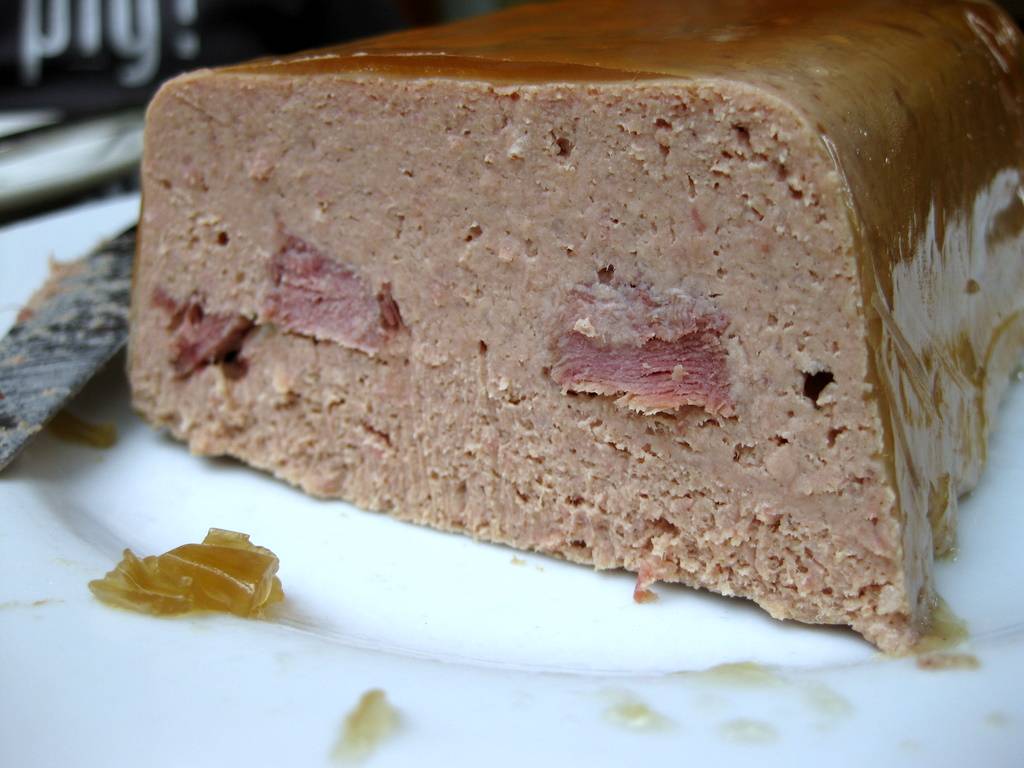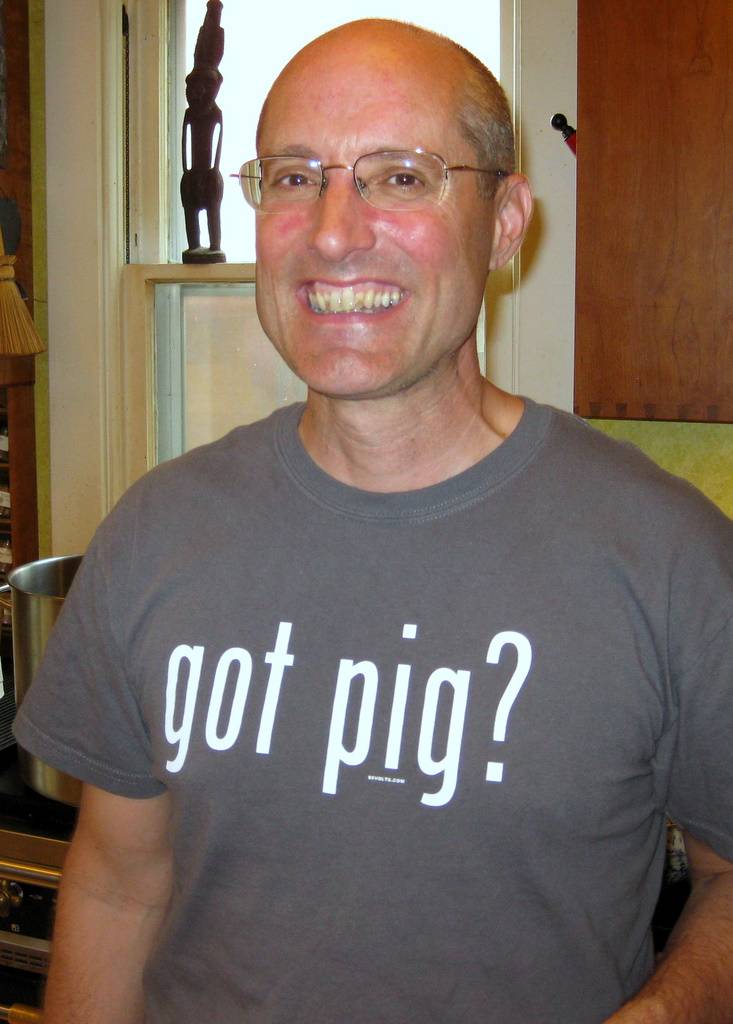 Laurence Mate, known by some as “Larbo,” knows a lot about meat. He writes a blog, sharing his thoughts on meat and food politics, titled “This Little Piggy”. I visited him recently to learn more about him, his charcuterie, and his ideas about food. He had a lot to say, and his passion for the subject is infectious.
Laurence Mate, known by some as “Larbo,” knows a lot about meat. He writes a blog, sharing his thoughts on meat and food politics, titled “This Little Piggy”. I visited him recently to learn more about him, his charcuterie, and his ideas about food. He had a lot to say, and his passion for the subject is infectious.
Charcuterie is a class of meat preparations including such delicious items as sausage, pate, and various cured, smoked, and fermented meats. These techniques have been around for centuries, used to preserve and improve meat before the days of refrigeration. In different preparations, salting, fermenting, dehydrating, or cooking creates a product that has a longer shelf-life and a different, often more intense, flavor.”
“Larbo” has a love for food that is appreciated simply by hearing him talk about where he gets his raw materials. He doesn’t use supermarket meat–it’s been years since he bought any. The meat he uses is raised, butchered, and aged how he wants it. He has been able to do this by developing strong relationships with local farmers, like Triple S Farms and Joy of Illinois. All this, he says, is to ensure that he’s starting with the best possible raw materials. The meat for the sausage he was making when I visited came from what he refers to as his “Sacred Bull.”
Laurence has been practicing the art of making charcuterie for years. A look at his bookshelf reveals that he’s done a lot of homework getting to the point he’s at. His #1 book recommendation is Charcuterie by Michael Ruhlman and Brian Polcyn, though he has shelves full of other gems that he references from time to time. His books range from large textbooks about garde manger (the kitchen position responsible for producing charcuterie), to small volumes with obscure sausage recipes.
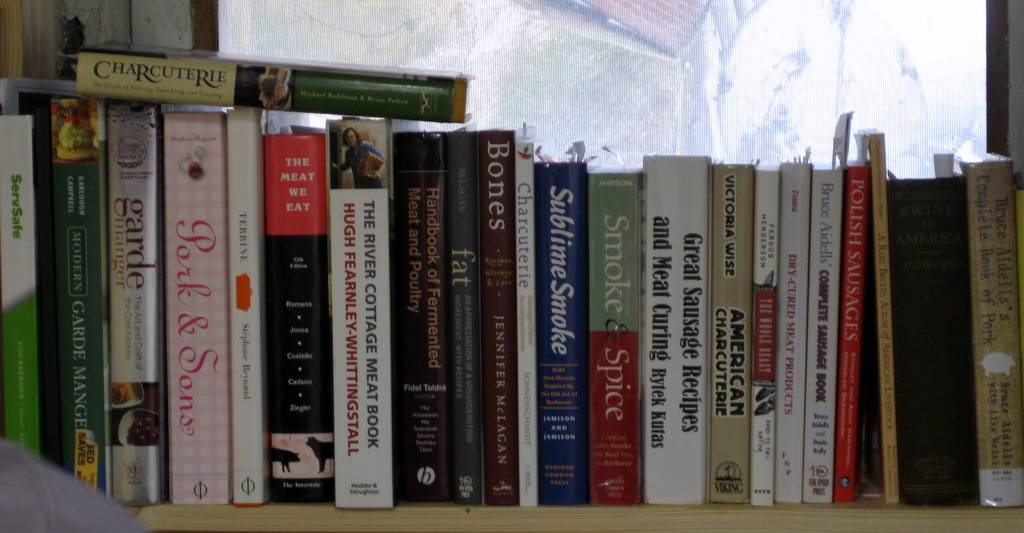
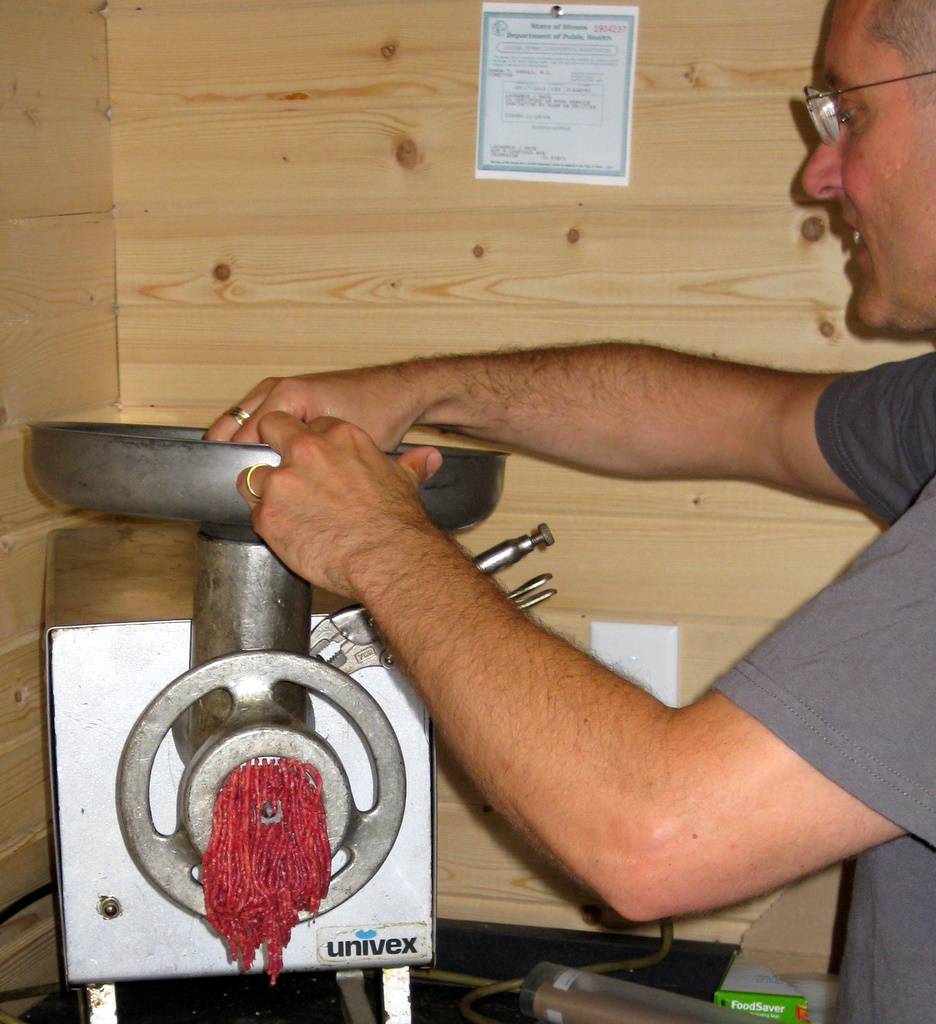
Laurence had one of these little books out, as he was going to be making some Moscow sausage while I was there. When I got there, he was already cutting up the meat and fat in preparation for grinding. Meat is, after all, the cornerstone of good charcuterie. This meat was special, from a bull he had processed specially for his purposes (most beef comes from cows). He took it to his grinder, from a used restaurant equipment supplier on eBay. It was old, but sturdy. It could handle what the stand mixer meat grinder attachment couldn’t.
With the fat and meat ground (separately) to the recipe’s specifications, he mixed the meat with the salt/spice/culture mix he made earlier in an ancient counter-top Hobart stand mixer. He explained that this is, of course, to mix the meat  and fat evenly, but also to develop the proteins (myosin) in the meat that make the mixture stick together. Once mixed, the sausage was packed into the sausage stuffer he uses. It’s a large piston-style stuffer with a hand crank. He loaded on the beef middles, tied the end, and created a long meat tube. He twisted and tied it into large links. The sausage was then ready to ferment according to the recipe.
and fat evenly, but also to develop the proteins (myosin) in the meat that make the mixture stick together. Once mixed, the sausage was packed into the sausage stuffer he uses. It’s a large piston-style stuffer with a hand crank. He loaded on the beef middles, tied the end, and created a long meat tube. He twisted and tied it into large links. The sausage was then ready to ferment according to the recipe.
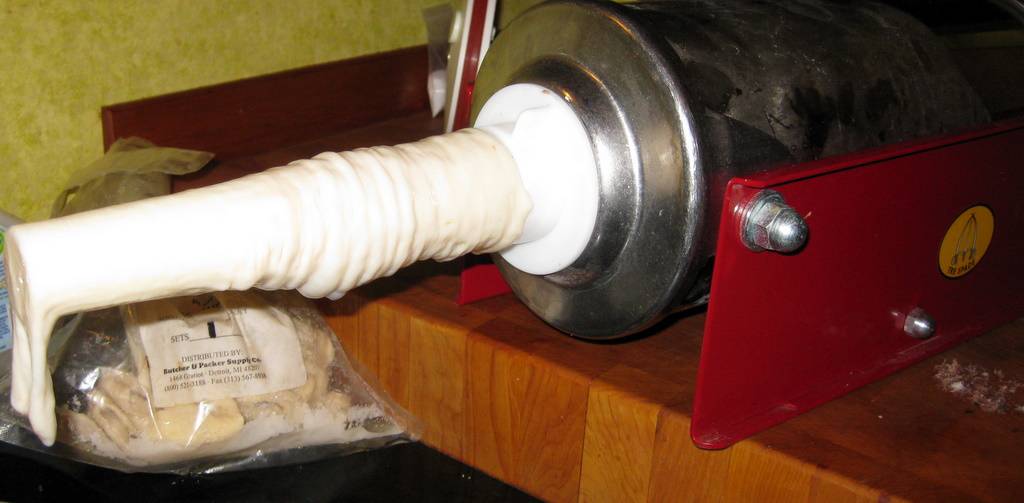
During the whole process, Laurence shared many stories of previous projects, including his first sausage which was a failure. He’s learned how to do lots of different things over the years, spanning the entire range of charcuterie methods. One of the things I got to try during my visit was one of his pleasant surprises, a pork liver pate made with a different technique than his usual recipe. It was creamy and delicate, with lots of deep, porky flavor. It was a great example how though Laurence is a skilled craftsman, he’s still trying and discovering new things.
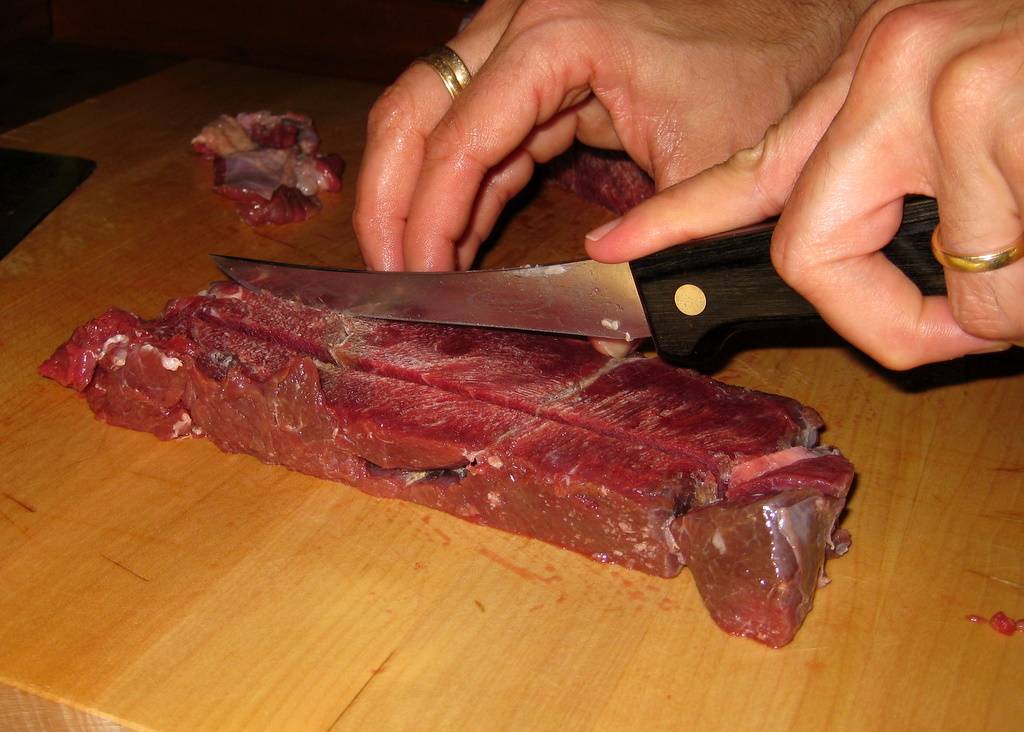

Laurence Mate does produce a lot of sausage, bacon, and other charcuterie, but he does not sell to the public. Much of it goes to family and friends, but you may be able to arrange to taste some of his products. Contact information is available on his website, This Little Piggy. Photos from my visit, more than just the ones in the article, are on Flickr.








